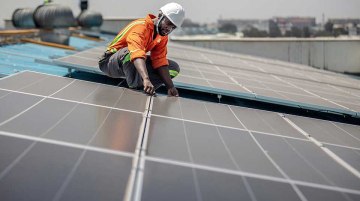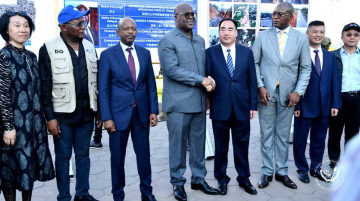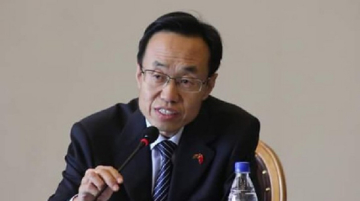
By Jiaqi Lu
The era of carbon-intensive mega-investments by China in global energy infrastructure may be coming to an end.
Recent findings from the China’s Global Energy Finance Database, managed by the Boston University Global Development Policy Center, reveals a cautious and strategic shift in China’s overseas energy finance. While the quantity of its investments has waned, China is selectively backing smaller, greener-focused projects, particularly in Africa.
This pivot raises critical questions about the future of international climate finance and China’s role as a major funder of sustainable development in the Global South.
From 2000-2023, Chinese development finance institutions (DFIs), including China Development Bank (CDB) and the Export-Import Bank of China (CHEXIM) lent a total of $209 billion to 118 public borrowers across 68 countries. This finance, larger than the amount of energy finance extended by the World Bank over the same period, has significantly impacted global energy development.
However, the dominance of carbon-intensive projects within China’s loan portfolio historically – over 60 percent dedicated to fossil fuels – now sits uncomfortably alongside its international climate commitments.
In 2021, Chinese leader Xi Jinping announced an end to new overseas coal financing, signaling a break with its carbon-intensive past. This shift comes amid global calls for divestment from fossil fuels. Indeed, for three consecutive years, China’s overseas energy lending has steered clear of fossil fuel projects, as seen below:

In 2023, after a one-year pause, Chinese DFIs returned to global energy finance, albeit with caution. The $502 million in new energy loans amounts to just 6 percent of China’s average annual lending from 2000-2022 and is targeted solely at low-carbon energy in three African nations – Madagascar, Uganda, and Burkina Faso. These are not the high-profile infrastructure undertakings that dominated the earlier years of China’s Belt and Road Initiative (BRI). The average loan size has dropped from a historic $574 million to a more modest $167 million in 2023.
The shift towards smaller-scale projects under a “small is beautiful” approach reveals a risk-averse strategy. At the recent Forum on China-Africa Cooperation (FOCAC), China committed to building 30 clean energy projects in Africa through 2027. The projects prioritize low-carbon sources and promise economic and environmental benefits, including job creation, energy independence, and a reduction in carbon emissions.
While these developments offer hope for a greener future, questions remain. China’s loans may be smaller and focused on low-carbon energy, but the scale lags far behind the billion-dollar days of the fossil-fuel years. Compared to the average $431 million loan for coal projects between 2000-2020, recent green energy loans average $184 million per project. The Donsin Solar Power Plant in Burkina Faso, at 25 megawatts, is a modest start, but Africa’s burgeoning energy demand will require larger commitments.
The real test will be whether China can maintain its green finance commitments. Despite recent progress, ambiguity remains over how it will handle large-scale fossil fuel projects that are already built or under construction, like the contentious East Africa Crude Oil Pipeline. Moreover, China’s economic challenges at home cast shadows on the capability and sustainability of its overseas ventures. Will these smaller, renewable projects be enough to satisfy both China’s climate finance responsibility and the energy needs of its partner countries?
For international climate stakeholders, China’s evolving lending strategy offers lessons in the challenges and complexities of a green energy transition. As the largest single provider of energy finance to developing countries, China’s choices carry global implications. The country’s increasing emphasis on renewable energy aligns with its leadership aspirations in climate governance. Yet, a deeper commitment is essential. If China’s energy finance rebound becomes even stronger and greener, the implications for the global energy landscape – and climate goals – could be profound.
Ultimately, the strength of China’s green finance push depends on both its economic resilience and the resilience of the global climate governance regime. Considering the global political challenge surrounding the response to climate change, China, now more than ever, should play a leadership role in climate finance and ramping up renewable energy investment in the Global South. But it won’t be alone. As the European Union ramps up their own climate finance initiatives, a cooperative approach between Europe and China that integrates climate finance efforts could yield substantial benefits for developing countries.
China’s recent shift in overseas energy finance is promising but precarious. Its risk-averse lending approach, focused on smaller, greener projects, signals a commitment to climate finance – but a tenuous one. If China can boost its investment in green energy – especially solar and wind – in the Global South, it will be a powerful catalyst for global energy transformation. The world is watching to see whether China’s “small and beautiful” projects are just the beginning of a long-term green pivot or a temporary adjustment.
Jiaqi (Jackie) Lu is a Senior Academic Researcher with the Global China Initiative and serves as Team Lead for the Energy and Climate workstream








